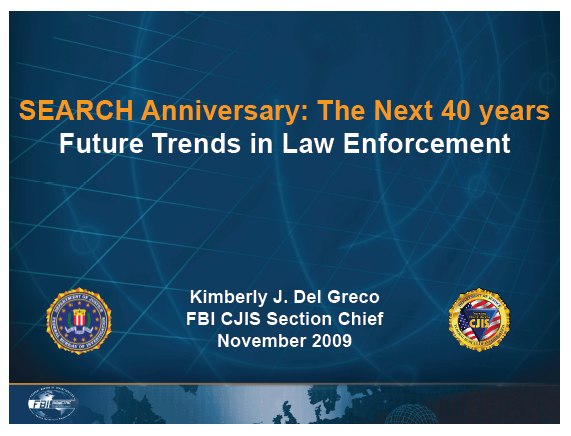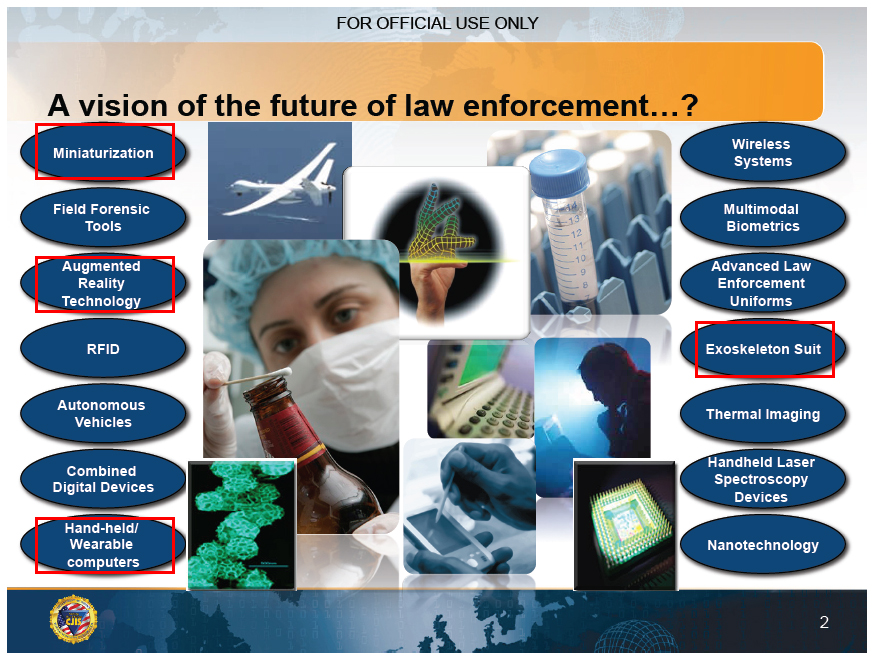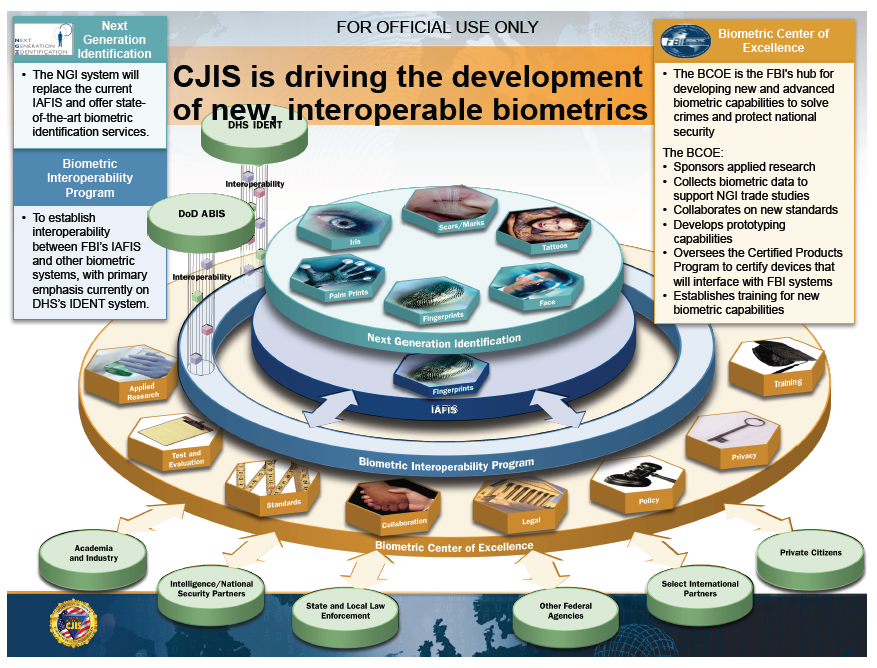 SEARCH Anniversary: The Next 40 years
SEARCH Anniversary: The Next 40 years
- 13 pages
- For Official Use Only
- November 2009
| (10.2 MB) |
Technology will undoubtedly continue to radically change how crimes are committed and policed
Increased sophistication and “boundaryless” characteristics of crimes pose new challenges
– “Criminal and terrorist networks of the information age will be able to
coordinate their actions quickly and effectively without centralized
command and control structures, brick and mortar facilities, or hierarchical
leaders who have been the standard target of traditional police operations”
Policing 2020Rather than forecasting what technology will be adopted, law
enforcement must commit itself to be:
– Flexible
– Nimble
– AdaptableFBI Criminal Justice Information Services (CJIS) Division is
committed to provide timely and relevant criminal justice information
and utilize state-of-the-art technology
We look out for trends on the horizon……
Law Enforcement requires greater ability to sift,
process, and share the petabytes of available dataData Explosion
– 13 million gigabytes of information are added to the world’s
databases every day; a sizeable proportion can be used for criminal
and/or terrorist purposes
– Law Enforcement information might be in the form criminal history
information on suspects, geographic location information, video
images from a surveillance camera, voice transmission from a
police officer in another department, or any other type of information
from any other digital node on the networkLaw Enforcement Processing Lags
– The data management method of choice in many police
departments is still manual filing methods relying on
human clerks, paper forms, and metal filing cabinets…



